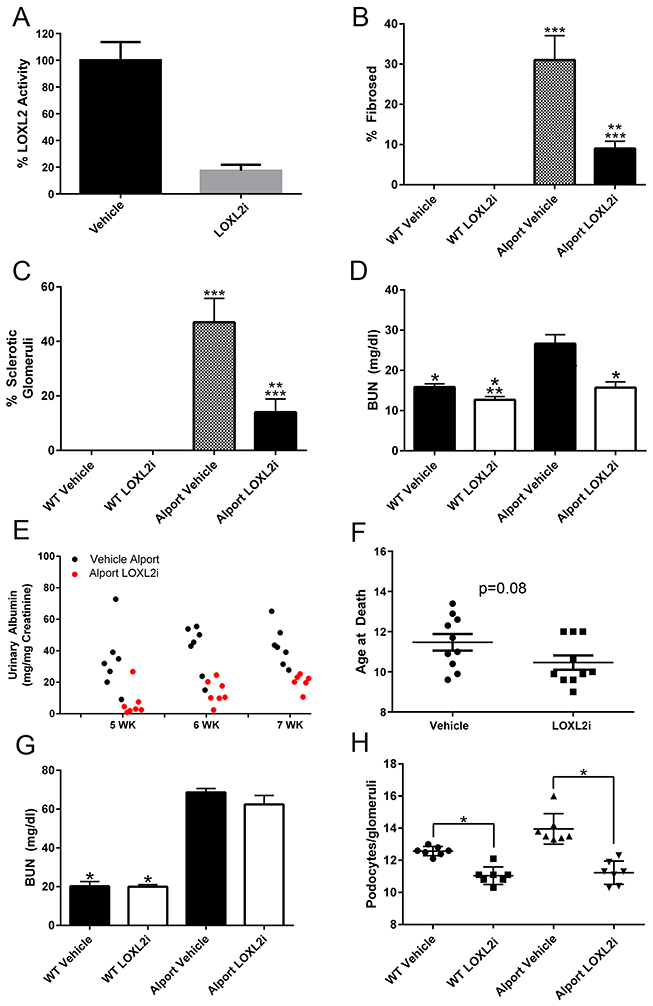Figure 4.

Treatment of Alport mice with LOXL2i normalizes renal morphology and function, but does not improve lifespan. (Panel A) Plasma LOXL2 activity in mice orally dosed with PAT-1251 relative to vehicle control mice (Ave % ± SEM) (Panels B-E) Wild type and Alport mice were treated with LOXL2i from 2-7 weeks of age and scored for % fibrosis (panel B), % glomerulosclerosis (panel C), blood urea nitrogen levels (BUN) (panel D) and albuminuria normalized to urinary creatinine as measured by ELISA (panel E). Panel F shows that lifespan of LOXL2i treated Alport mice is shorter than vehicle-treated Alport mice. Panel G shows BUN levels at 10 weeks (PAT-1251 dosing from weeks 2-10) and Panel H shows a significant reduction in podocyte numbers in LOXL2i-treated mice (weeks 2-7) relative to vehicle-treated mice. Mean ± SEM *p<0.05
